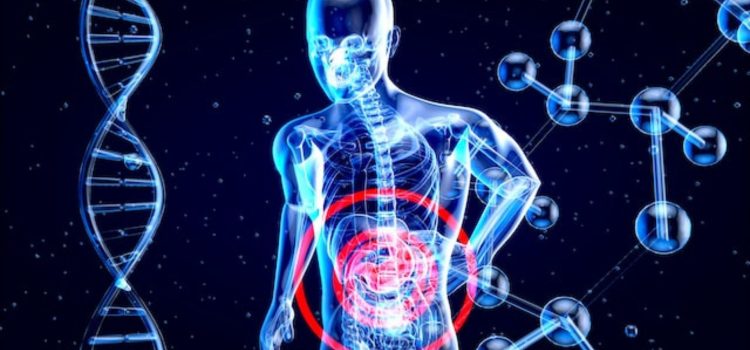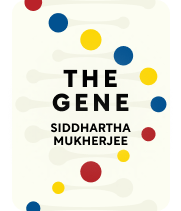

This article is an excerpt from the Shortform book guide to "The Gene" by Siddhartha Mukherjee. Shortform has the world's best summaries and analyses of books you should be reading.
Like this article? Sign up for a free trial here.
Can gene therapy cure any disease? How far are we from a future where gene therapy is mainstream?
Scientists have already begun to explore the possibilities of gene manipulation with new technologies like stem cell research. However, progress is slow due to ethical and legal concerns, especially when it comes to modifying human genes.
Keep reading to learn about the future of gene therapy.
Gene Therapy Could Be the Future of Medicine
Gene therapy—using genetic engineering to fix damaged or disease-causing genes—offers promising treatments for diseases ranging from hemophilia and cystic fibrosis to cancer.
(Shortform note: Safe and effective gene therapy is still a work in progress. In the US, it’s currently only available to patients who agree to participate in clinical trials.)
One major area of study is in pluripotent stem cells: immature cells that can be genetically manipulated to grow into any type of adult cell. While there are obvious ethical issues with harvesting immature cells from human embryos, doctors now believe it’s possible to manipulate the genomes of adult cells so that they revert to stem cells. From there, the cells can grow into whatever’s needed. In other words, doctors may be able to treat patients using stem cells harvested from their own bodies.
Theoretically, doctors could use these stem cells to regenerate damaged nerves and organs, helping people to heal from injuries and diseases that are otherwise untreatable.
(Shortform note: Aside from exciting new treatment possibilities, stem cells are also useful to model how diseases progress and to test new drugs. For example, a researcher could take a cell sample from a patient, grow that sample into new tissue, and observe how the disease affects it. The researcher could also use that sample to test experimental treatments without putting the patient’s health at risk.)
Mukherjee also discusses CRISPRs: “Clustered Regularly Interspaced Short Palindromic Repeats”—in simple terms, repetitive and easily identifiable sequences of nucleotides.
A gene editing technique called CRISPR-Cas9 targets those sequences using an enzyme called the Cas9 nuclease, allowing scientists to make precise cuts to DNA. That, in turn, allows specific sequences of DNA to be removed and other sequences to be inserted. In short, scientists can use this technique to make precise, controlled edits to a cell’s DNA, thereby changing the genetic instructions encoded in it. Editing genes this way could potentially cure a wide range of genetic diseases, correct harmful mutations, and possibly even treat cancer.
| CRISPR: The Future of Gene Therapy? While CRISPR-Cas9 is a powerful gene editing technique, it has several serious limitations that scientists are still working to overcome: Hard to scale. It’s difficult to edit DNA in large numbers of cells at once, which severely limits CRISPR’s usefulness as a treatment for widespread or systemic issues throughout the body. Not 100% effective. Even genes that are targeted by CRISPR may not show edited genomes as intended.Not 100% precise. Though rare, CRISPR can affect genes other than the intended targets. These unintended edits could, in theory, cause the sorts of harmful mutations that CRISPR-Cas9 is intended to correct—for example, an uncontrolled mutation could cause cancer. |
Germline Editing: Inheritable Changes
Mukherjee says that gene therapy currently only affects the person it’s performed on and doesn’t get passed to that person’s children. However, it’s theoretically possible to create a human embryo using genetically modified stem cells, if those stem cells can be converted into gametes (sperm and eggs). While that should be possible—stem cells should be able to turn into any type of cell—the technique is still unproven.
But if scientists could create genetically modified embryos in this way, it would mean all of that person’s cells, including his or her gametes, would carry the modifications. Therefore, those changes would be passed down to any children the person had. At that point, Mukherjee says, we would have gone from editing a person’s genes to editing a person’s genome; in doing so, we’d have created an entirely new type of organism, and potentially changed the gene pool forever.
Germline Editing: Legal, Practical, and Ethical Concerns
Currently, germline modifications—changes that will be passed on to future generations—are illegal, and Mukherjee says that’s a wise policy for several reasons. On a practical level, scientists’ understanding of genomics is still limited; we simply don’t know enough about how genes interact with each other and with environmental factors. That means that even a seemingly beneficial change to a gene could have unforeseen and devastating consequences.
Furthermore, on an ethical level, genetically modifying the human race raises uncomfortable echoes of eugenics and the Holocaust, and poses many difficult questions. For example, should we engineer away undesirable traits if we can do it without killing living people, or would that be giving medical treatment without consent? Should parents be able to choose what traits their children will have, thereby creating “designer babies?” If we’re able to “improve” the human genome, would that change what it means to be human—in other words, would people who don’t have those changes be considered somehow less than human?
These are deep moral questions without easy answers; but they’re questions that Mukherjee believes we’ll have to face before we push genetics too much farther.

———End of Preview———
Like what you just read? Read the rest of the world's best book summary and analysis of Siddhartha Mukherjee's "The Gene" at Shortform.
Here's what you'll find in our full The Gene summary:
- What genes are and how they work, explained in simple terms
- The history of gene discovery, dating back to the 1800s
- What the future of genetic engineering looks like






